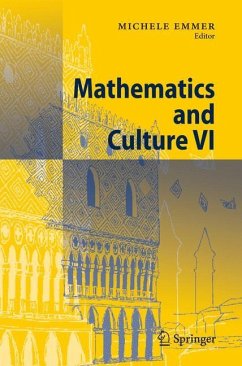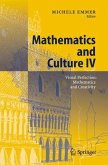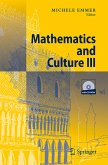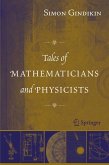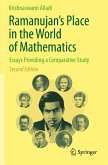The new volume in the series Mathematics and Culture continues a journey that began in 1998, a quest to describe the interplay of influences between the world of mathematics and the worlds of art, cinema, theatre and history, medicine, biology and aeronautics. The series editor, Michele Emmer, has chosen a new collection of essays that cast light on these connections in new, surprising and fascinating ways.
Mathematics and Culture VI includes:
An homage to the artist Mario Merz, some of whose work depicted numbers derived from the Fibonacci in curving neon arrays
Essays probing the relationships of mathematics with the moving images of video and cinema; the complex connections between mathematics and psychoanalysis and new frontiers of applied mathematics
Chapters entitled Mathematics and Cartoon; Mathematics and Art; Mathematics and Cinema, and Mathematics and wine, offering the observations of an international group of thinkers, writers and researchers across a broad spectrum of disciplines
A stimulating section following the journeys of Marco Polo, and exploring the Venice that both set him on his travels and welcomed him back, traverses not just miles but culture and science.
Written for both mathematicians, for teachers, students and researchers, and a broad audience of readers with an interest in the history of ideas, this book offers an excellent starting point for research into the tightly woven bonds between scientific and cultural endeavour.
Mathematics and Culture VI includes:
An homage to the artist Mario Merz, some of whose work depicted numbers derived from the Fibonacci in curving neon arrays
Essays probing the relationships of mathematics with the moving images of video and cinema; the complex connections between mathematics and psychoanalysis and new frontiers of applied mathematics
Chapters entitled Mathematics and Cartoon; Mathematics and Art; Mathematics and Cinema, and Mathematics and wine, offering the observations of an international group of thinkers, writers and researchers across a broad spectrum of disciplines
A stimulating section following the journeys of Marco Polo, and exploring the Venice that both set him on his travels and welcomed him back, traverses not just miles but culture and science.
Written for both mathematicians, for teachers, students and researchers, and a broad audience of readers with an interest in the history of ideas, this book offers an excellent starting point for research into the tightly woven bonds between scientific and cultural endeavour.

